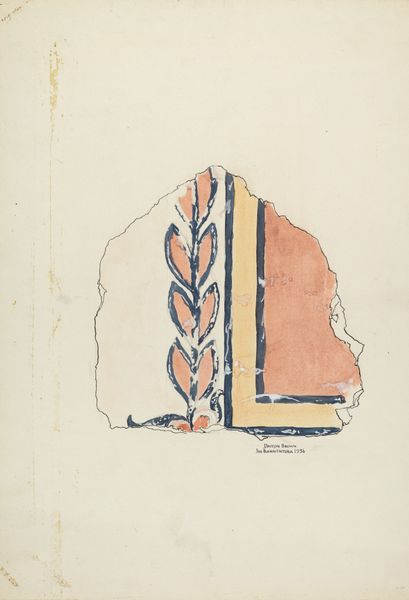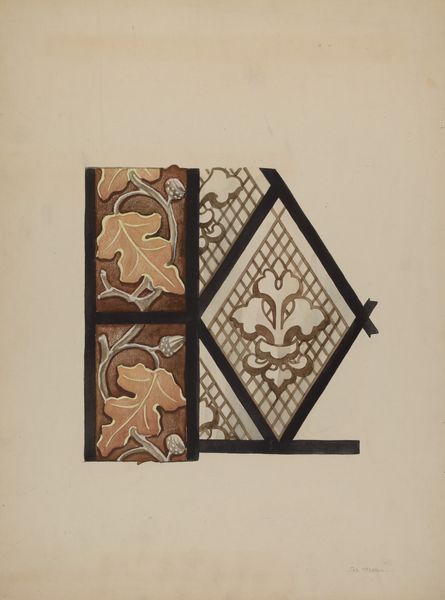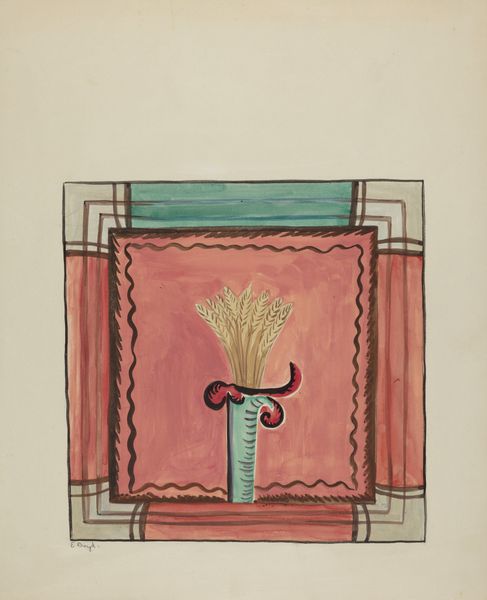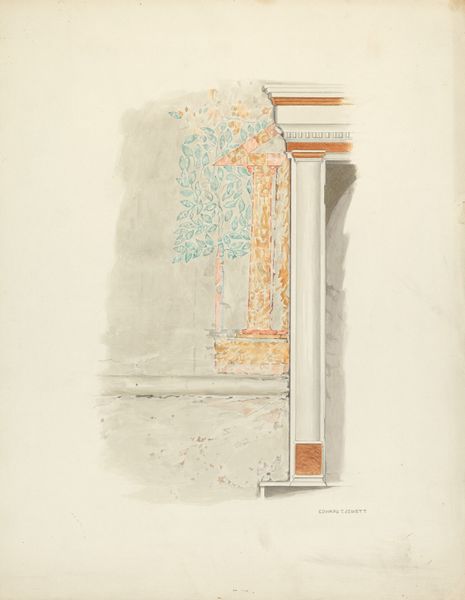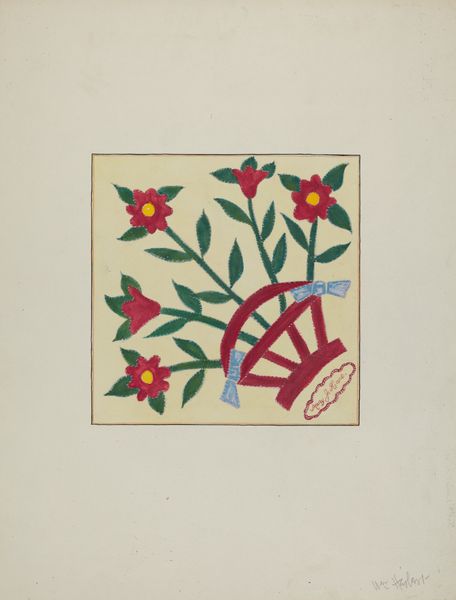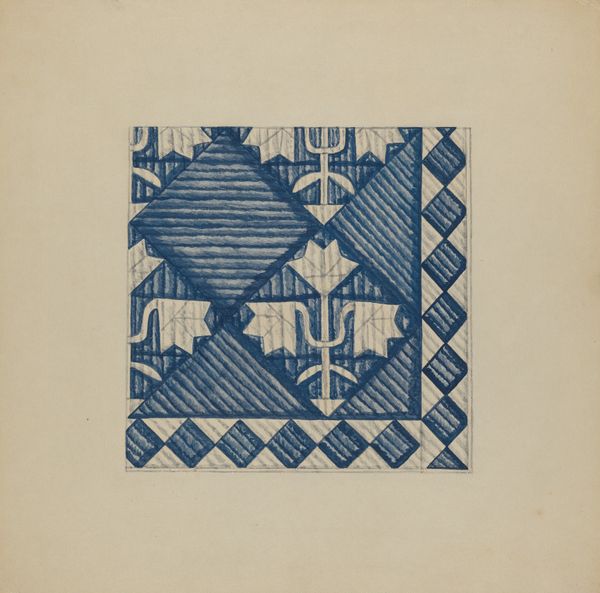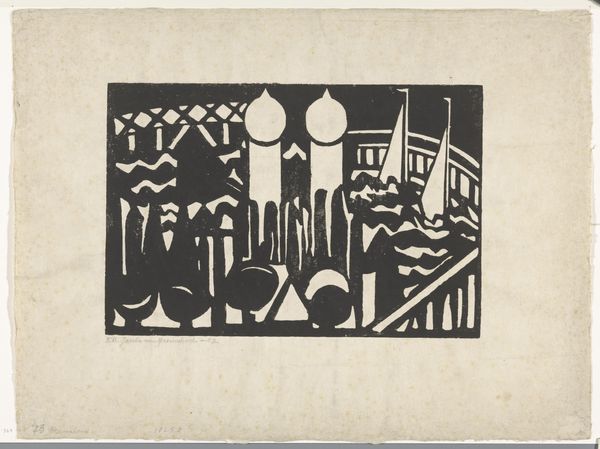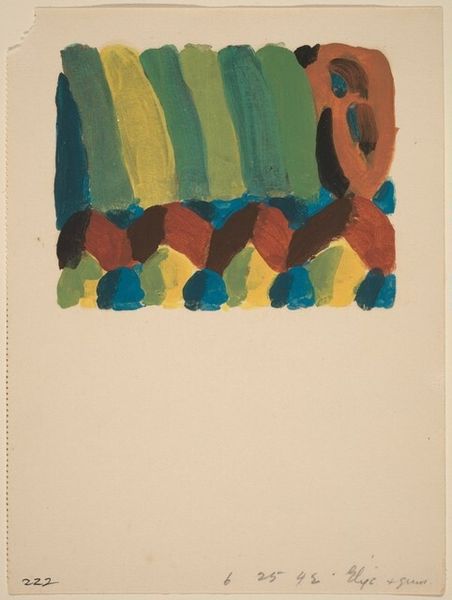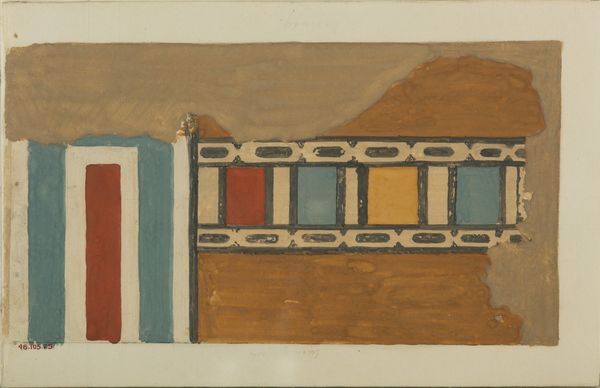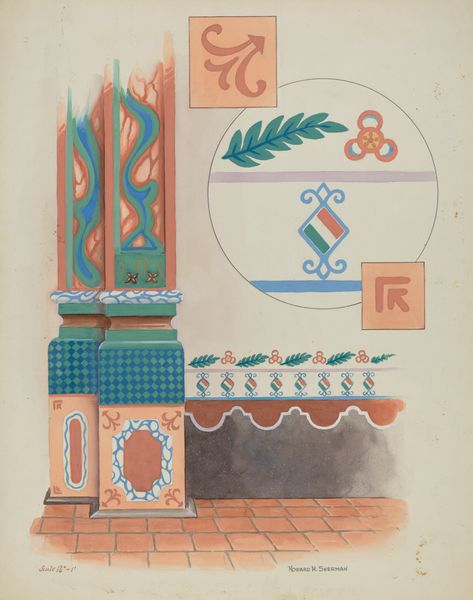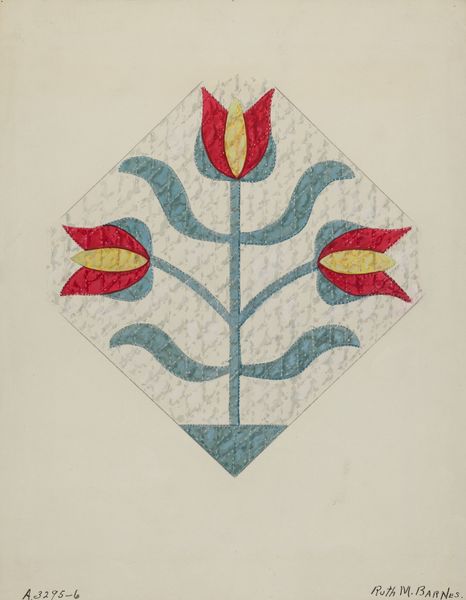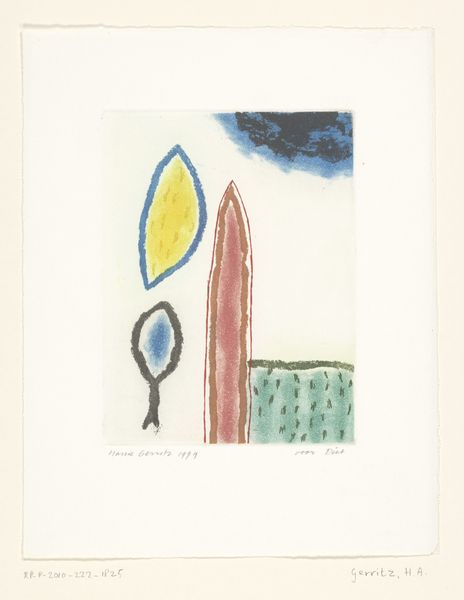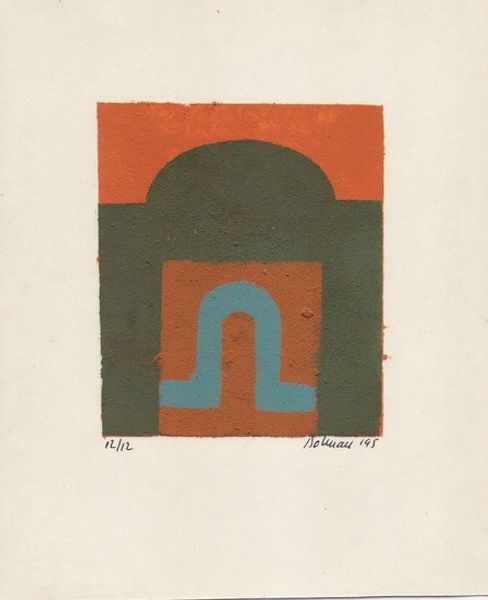
drawing, painting, watercolor
#
drawing
#
water colours
#
painting
#
watercolor
#
coloured pencil
#
geometric
#
decorative-art
#
watercolor
Dimensions: overall: 35.8 x 24.4 cm (14 1/8 x 9 5/8 in.) Original IAD Object: Drawing 1/3 actual size
Copyright: National Gallery of Art: CC0 1.0
Curator: William Kieckhofel’s "Wall Painting (Fragment)," created around 1939, offers a glimpse into the artist's decorative sensibilities. The work appears to be rendered with watercolor and colored pencil. Editor: It feels incomplete, like a rescued piece of a larger narrative. The palette is gentle, muted earth tones mostly—suggesting warmth and perhaps domesticity. What catches my eye is how isolated the fragment feels, though. Curator: It’s certainly intriguing because it's a fragment, it demands that we speculate about its original context and purpose. Given its time and medium, one might ponder whether it relates to mural studies commissioned by the WPA during the late 1930s, a period marked by significant government investment in public art. Editor: Yes, the era is vital here. I see the influence of art deco—those stylized leaves, that geometric simplification. I wonder if the muted color choices reflect the somber mood of the late Depression era. Are we looking at a study that never translated into a grander realized vision, or a survivor of something lost? Curator: The materials also matter, though. Watercolor and colored pencil suggest an intimate scale, almost sketchbook-like, versus the full commitment of fresco. If this wasn’t meant to be shared as an image, who was supposed to see this study and what exactly did Kieckhofel want them to notice in particular? Editor: I’m struck by the formal composition—the rigid lines bordering softer, organic shapes of the foliage. Is it about finding beauty within the restrictions? Did it symbolize the hopes and struggles for balance during the tail end of economic recovery? Curator: Such a close examination certainly invites us to speculate on that idea of hope. But the image's accessibility through the decorative visual style could have played a significant role during this specific period. It could be for visual relief during financial strain. The image’s incompleteness seems symbolic of both artistic expression and of economic disparity. Editor: It's powerful how a mere fragment can unlock such deep social and historical considerations. For me, it reinforces the vital link between the art world, domestic aesthetics and sociopolitical history. Curator: I concur completely! This piece reminds us of art’s potential in bringing about visual experiences that spark crucial societal examination.
Comments
No comments
Be the first to comment and join the conversation on the ultimate creative platform.
